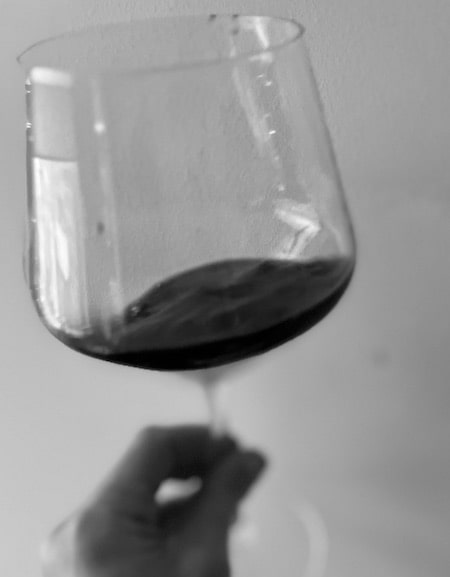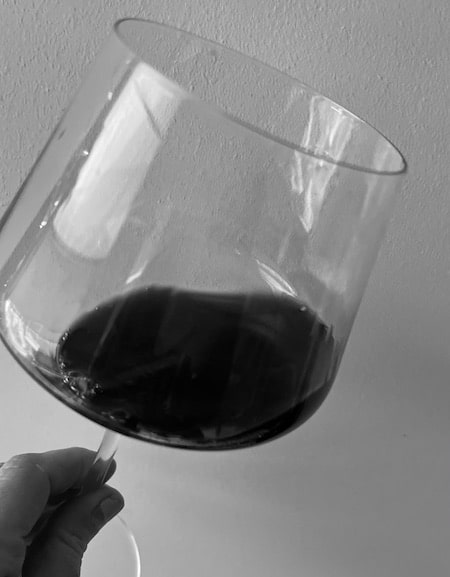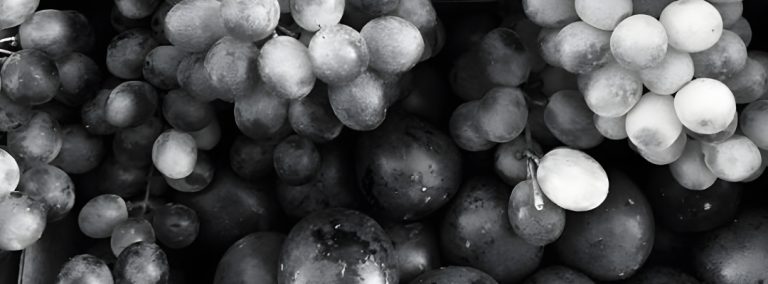Have you ever wondered if swirling wine is just for show? Swirling is when you grasp the glass by the stem and gently move your hand in a circular motion so the wine swirls around and lightly coats the sides of the glass. It’s a technique commonly practiced at wine tastings, but you can also see people doing it in restaurants and when drinking wines at home.
While swirling may appear a pointless ritual, there is in fact a purpose behind it. No, it doesn’t make you look cool or the wine in your glass taste better. What it does is make it easier for you to fully experience the aromas in the wine’s bouquet, and in turn appreciate the nuances in how it tastes. A swirl releases aromatics and gives you more insights into the intensity of the fruit, spice or earthy notes in what you’re about to drink.
So what’s the proper technique? Picture someone who has just ordered a bottle of wine for their table. The waiter pours a small amount in the glass. They pick it up and then gently move it in circles before bringing it to their nose. This happens several times before they take a sip. That’s because you should swirl a glass of wine two to three times before tasting it. However, that’s all it takes and you want to avoid further swirling. This is unless you have a wine that’s overly closed and you’re trying to open it up by aerating it.
The science behind swirling
When you’re swirling wine what you’re really doing is increasing its surface area and encouraging more evaporation. The motion releases aroma compounds which then go into the air and are picked up by your nose and understood as scents. Oxygen is the key component as swirling wine inside a closed bottle will not have the same effect. In a sense, it’s not that different from decanting, which is when you pour wine into a different container so it has increased exposure to oxygen before you drink it.
Is swirling only for red wine?
Some people think swirling is better for red wines, but this isn’t actually the case. You can swirl white wine, sparkling wines and even sweet dessert wines.
If you keep swirling beyond the first sip, often this will be for bigger reds which need more time to open up, think a Barolo or Barbaresco. Nonetheless, some bottles of white can require additional exposure to oxygen for the aromas to fully emerge. And if that’s the case, swirl away!

7 Tips for swirling wine
- Pour some wine into your glass. Be sure not to overfill the glass. If you fill it to the top, strong swirls can cause the wine to spill over the sides. More importantly, if it’s overfull, there’s no empty part of the glass bowl to help capture the aromatics. Aim for a quarter to a half full.
- Grasp the glass by the stem. The technique is much harder to execute if you hold the bowl. Plus, your fingers can smudge the glass, which might distort what you see.
- Use a repetitive circular motion. You can swirl your glass in the air or on the table. Several short and slow rotations on a table is often the easiest and might be better if you’re worried you’re likely to overdo the motion and spill it. It doesn’t matter if you move the glass clockwise or counterclockwise.
- Watch how the wine coats the sides of the glass. What you’re looking at are the wine’s legs which can tell you a number of things including how much alcohol and sugar is in the wine.
- Swirl it multiple times. Observe how the smell of the wine changes as you acclimate to it. Swirl it and smell it once, then repeat this a second and a third time. Each swirl will help you pick out more of the scent compounds.
- Keep a written record. Try writing down what you observe each time so you can understand how the wine is opening up.What new aromas can you smell after the third swirl?
- Don’t over-swirl. Once you start drinking the wine, continually swirling it between sips can overwhelm your senses. This actually has the opposite effect and means you’ll understand less about the aroma and taste profile.
When you might need to keep swirling
Swirling is something that primarily happens at the beginning of a wine tasting, when you are first served a wine. It’s not something you need to keep doing, except in certain circumstances, for example, when the wine hasn’t opened up. If you know you’re not fully tasting a wine, sporadic swirls can be helpful as the increased exposure to oxygen will assist the wine in releasing its full flavor and aromatics.
Does food taste different when you swirl your wine?
Food doesn’t taste different if you swirl your wine, but the wine itself may change depending on what food you’ve had. That’s why swirling is something you do when you first open a bottle, but not necessarily when trying different wine food pairings.

Not sure a wine is corked? Try swirling it.
When a wine is corked it means the cork that was put into the bottle contained a type of fungus that affected the wine. A bad cork can give aromatics of damp cardboard or worse. A general rule of thumb is the cork should smell like wine, not cork. The wine will also have a generally muted flavor. The more the wine is exposed to oxygen, the more prominent the bad aroma will become. So, if you aren’t sure if what you’re drinking is corked, give it a few swirls to see if it gets better or confirms your suspicions.
Can you swirl spirits?
Most alcohol, even white spirits like vodka, tequila and gin, has a natural aroma that is enhanced by swirling or stirring. People swirl rum, whisky, cognac and brandy.
What to pay attention to when tasting wine
- The nose. This is a term used to refer to the aromatics or bouquet of the wine. The nose is what you can smell when you first bring the glass to your mouth, and incidentally, it’s one of the reasons why choosing the right glasses for the right wines is so important. A young wine will usually have primary fruit aromas, whereas an older wine can take on secondary aromatics, including earthy tones like notes of leather, mushrooms and herbs. There can also be oak elements if a wine is oak-aged. Note, what you can taste will not always be exactly the same as what you can smell.
- Color and clarity. It’s always a good idea to look closely at the color of the wine you’re drinking. Wine isn’t just white, pink and red; certain grape varietals are associated with certain colors. You can also note how opaque or see through the wine is and you may pick up on variations in shades between the center and edges of the glass. Clarity is an indication of if a wine has been filtered and/or to what degree. It can also tell you about a wine’s age, as in the case of older red wines with sediment.
- The legs. Legs are the result of the thin film you’ve created on the sides of the glass during swirling. Wine that’s been swirled essentially turns into tears or droplets that then slide back into the glass. The slower the tears fall into the wine, the higher in alcohol, and/or sugar the wine is.
- The flavors. The flavors in a wine primarily come from the grape varietal but are heavily influenced by where the grapes were grown, or its terroir. This includes both the soil compounds and the altitude of the vineyard itself, plus the angle of the sun on the grapes, the climate and the weather conditions. When the grapes were picked and the winemaking process are also important; consider the difference between wines that are oaked and unoaked. A wine can have a more nuanced flavor profile or it can be fairly straightforward.
Just remember when you’re tasting wine, the characteristics you observe are affected by the temperature at which the wine is served. If a wine is too cold, you won’t be able to distinguish individual aromas and it can generally seem quite muted. This is the case for white wines as well as reds. There’s an easy fix though, let it sit for a few minutes to warm up before you drink it.
If a wine is too warm, especially with red wine, you risk smelling mostly the alcohol evaporating instead of the fruit. Try putting it in the fridge to chill. If you’ve already poured it into glasses, you could pour them back into the bottle, or cover the glasses with saran wrap and put them in the fridge for ten minutes.
Wine Trivia: Did you know the depth of a wine’s color can change with age? An older white gets darker in color whereas an older red generally gets lighter.





